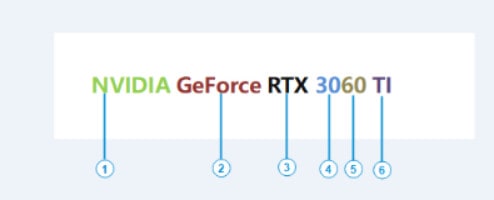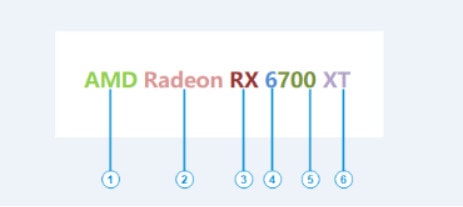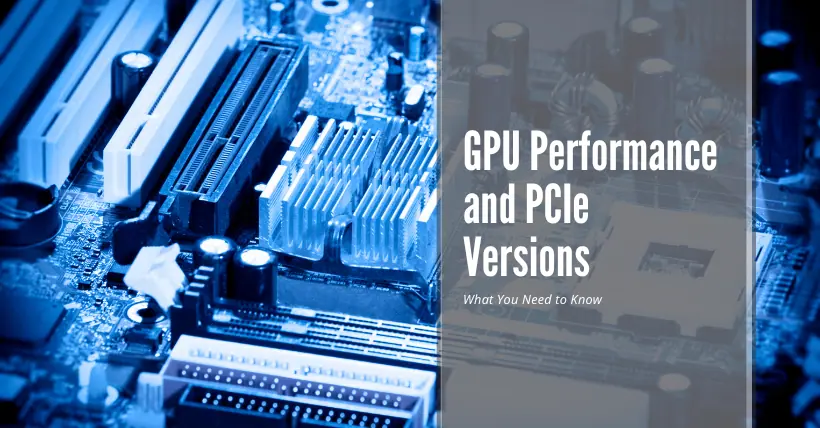In the era of informatization, the popularity of computers is increasing. Nowadays, almost every household is equipped with a computer. The key to determining the performance of a computer lies in its hardware configuration. When we generally build our own computers, the most important components are the CPU, graphics card, memory, motherboard, and hard drive. Today, we will mainly discuss knowledge about graphics cards.
01
Definition and Functions of Graphics Cards
We know that computer data is in binary, which means ‘0’ and ‘1’. However, we can’t directly output ‘0’ and ‘1’ to the monitor, so this is where a graphics card comes into play. A graphics card, also known as a display adapter or graphics adapter, is generally installed on the motherboard and is connected to the monitor via interfaces. It serves as a ‘bridge’ between the computer and the monitor, responsible for controlling the computer’s data output, converting data into images, and successfully displaying them.
A graphics card mainly consists of several components, including video memory (VRAM), display chip, digital-to-analog converter (DAC), VGA BIOS (Video Graphics Array Basic Input Output System), and interfaces. Among these components, the following three are particularly important:
- Video Memory (VRAM): This is the memory within the graphics card used to store the data that needs to be processed.
- Digital-to-Analog Converter (DAC): It converts discrete data into analog signals.
- VGA BIOS: Stands for Video Graphics Array Basic Input Output System, which is the fundamental input and output system for the graphics card.
To transfer the processed graphics to the monitor, the graphics card goes through the following process:
- The CPU transfers data to the display chip on the graphics card via the bus.
- The display chip processes the data and stores it in the video memory (VRAM).
- Depending on the actual display device, the digital-to-analog converter (DAC) determines whether the data in VRAM needs to be converted.
- The DAC transmits the converted data to the monitor through interfaces.
02
Classification and Interfaces of Graphics Cards
Graphics cards can be roughly categorized based on whether they are integrated with the motherboard: integrated graphics cards and dedicated graphics cards.
Integrated Graphics Cards:
Integrated graphics cards refer to GPUs (Graphics Processing Units) that are built into the same package as the CPU (Central Processing Unit). Integrated graphics cards generally do not have their own dedicated video memory (VRAM) and instead use a portion of the system’s main memory as VRAM, with the specific amount dynamically adjusted by the system as needed. It’s evident that if integrated graphics cards are used for tasks that require a significant amount of memory, their impact on the overall system performance can be noticeable.
Dedicated Graphics Cards:
As the name suggests, dedicated graphics cards are separate hardware devices that include the graphics chip and related components on a card independent of the computer motherboard. They are professional-grade graphic processing hardware and offer superior performance compared to integrated graphics cards. They are not only suitable for general tasks but also excel in 2D and 3D graphics rendering. Typically, dedicated graphics cards are used for gaming and running large-scale office software.
Graphics cards have primarily used four types of interfaces: ISA, PCI, AGP, and PCI-E. However, as of now, ISA and AGP slots are no longer found on computer motherboards, with only a few PCI and PCI-E slots remaining.
- ISA (Industry Standard Architecture): ISA was an early interface used for connecting peripherals like network cards and sound cards. Due to its low working frequency and slow data transfer speeds, it had relatively poor performance and was gradually replaced by PCI interfaces.
- PCI (Peripheral Component Interconnect): PCI was introduced around the same time as ISA but offered better performance. However, the CPU couldn’t directly access data from the graphics card through PCI.
- AGP (Accelerated Graphics Port): AGP was the primary interface for graphics cards before PCI-E became widespread. It had been criticized for its heat dissipation capabilities and gradually phased out of the market.
- PCI-E (PCI Express): PCI-E is a different type of bus compared to PCI, allowing the CPU to directly access data from the graphics card, resulting in faster response times, higher data transfer rates, and greater compatibility than PCI.
Therefore, most modern dedicated graphics cards use the PCI-E interface.
03
Graphics Card History and Development
In the 1980s, when IBM introduced personal computers, they also offered two types of graphics cards: the Monochrome Display Adapter (MDA) and the Color Graphics Adapter (CGA). In 1988, they introduced the more powerful Monochrome Graphic Adapter (MGA), which marked the first appearance of graphics on personal computers.
As the transition from the 2D era to the 3D era began, a significant milestone was the Trident 8900/9000 graphics card. It was the first graphics card to appear as a separate component in computers, rather than being integrated into a single chip. Subsequently, the Trident 9685 became a representative of the first generation of 3D graphics cards. However, the true pioneer of 3D graphics cards was the GLINT 300SX, which, while having simple 3D capabilities, had a significant impact.
In 1995, 3Dfx introduced the industry’s first true 3D graphics accelerator card: the Voodoo.
From 1999 to 2000, NVIDIA made a breakthrough by introducing the revolutionary graphics card, the GeForce 256, which included a Graphics Processing Unit (GPU). This innovation allowed data that was previously computed by the CPU to be processed directly by the graphics chip, greatly freeing up the CPU and improving chip efficiency.
Entering 2001, the graphics card market evolved into a competition between the two giants, NVIDIA and ATI, much like the desktop processor market with Intel and AMD. NVIDIA’s GeForce 3 series gained significant market share, while ATI’s Radeon 8500/7500 series, manufactured using a 0.15-micron process and incorporating various new technologies, posed a strong challenge.
By 2005, the PCI-E (PCI Express) platform had become well-known and accepted by mainstream users. Graphics cards also shifted into the era of the PCI-E platform, replacing the AGP interface, much like AGP had replaced PCI before. One thing is certain: new technologies continually provide users with faster and better display capabilities, delivering sensory enjoyment for gamers and enthusiasts.
04
Graphics Card Naming Conventions
Graphics cards are named following specific conventions, and I’ll explain the naming conventions for both NVIDIA and AMD graphics cards.
NVIDIA Graphics Cards, using the example of the NVIDIA GeForce RTX 3060 TI:

- NVIDIA: The brand name of the graphics card, representing NVIDIA Corporation.
- GeForce: The English trademark for the graphics card product, which is one of NVIDIA’s core product lines.
- RTX: Represents the positioning of the graphics card. RTX stands for high-end, while GTX represents mid-range, GTS for lower-end, and GT for entry-level. RTX denotes the new generation of high-end cards.
- 30: Indicates the generation of the graphics card. In this case, it’s the 30th generation, with higher numbers signifying better performance.
- 6: Indicates the performance tier within this generation. Higher numbers typically indicate higher performance.
- TI: Represents a special version. TI stands for the enhanced version, Super denotes a slightly enhanced version, SE for a cut-down version, M for mobile (laptop) versions, and no suffix represents the standard version.
AMD Graphics Cards, using the example of the AMD Radeon RX 6700 XT:

- AMD: The brand name of the graphics card, representing Advanced Micro Devices, Inc.
- Radeon: The series name of the graphics card, such as Radeon or Radeon Pro.
- RX: A subcategory or naming detail for the graphics card.
- 6: Represents the series number. In this case, it’s the 6th series, and generally, higher numbers indicate newer generations.
- 70: Indicates the performance tier within this series. Higher numbers typically signify higher performance.
- XT: Represents a special version. XT usually stands for the highest-performance version, but not all AMD cards have this suffix. Some other possible suffixes include XTX, XL/GTO, Pro/gt, SE, or no suffix, which represents the standard version.”
These naming conventions help consumers understand the relative performance and positioning of different graphics card models within each brand’s lineup.
05
The Future of Graphics Cards
In 2020, the skyrocketing price of Bitcoin triggered a cryptocurrency mining frenzy in China. Due to the general-purpose computing capability of GPUs (Graphics Processing Units) used in graphics cards, they became incredibly popular for mining due to their strong computational power. This led to a frenzy of graphics card purchases, resulting in shortages and significantly inflated prices in the market.
However, as the price of Bitcoin has since declined and government authorities have introduced regulations on cryptocurrencies, graphics card prices have gradually normalized. The industry is returning to a more rational state. Many people now believe that the most critical factor influencing graphics card price fluctuations is the rise and fall of cryptocurrencies.
The pursuit of high-quality graphics, augmented reality (AR), virtual reality (VR), and other virtual experiences becoming more accessible to the general public will continue to drive increasing demands for graphics card performance. People’s needs are the driving force behind continuous technological breakthroughs and innovations in the graphics card industry.
In the future, we can expect graphics cards to evolve in several ways:
- Improved Performance: Graphics cards will continue to push the boundaries of performance to meet the demands of high-quality gaming, AR, VR, and other graphics-intensive applications.
- Efficiency and Power Consumption: Energy efficiency will become increasingly important, with a focus on reducing power consumption while maintaining or increasing performance.
- Ray Tracing and Realism: Advancements in ray tracing technology will bring even greater realism to graphics rendering, enhancing the visual experience in games and simulations.
- AI Integration: Graphics cards will integrate more AI capabilities, enabling smarter and more adaptive graphics rendering.
- Connectivity: Graphics cards will likely continue to support evolving display standards and connectivity options to enable seamless integration with advanced displays and VR/AR headsets.
- Sustainability: There may be increased emphasis on sustainable manufacturing and materials to address environmental concerns associated with electronics production.
Overall, the future of graphics cards will be shaped by the evolving needs of consumers, from gamers to professionals, and the ongoing advancements in technology.







Disclaimer: This article is created by the original author. The content of the article represents their personal opinions. Our reposting is for sharing and discussion purposes only and does not imply our endorsement or agreement. If you have any objections, please contact us through the provided channels.



